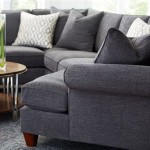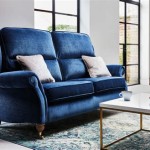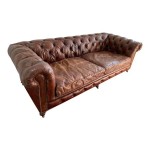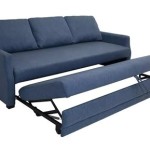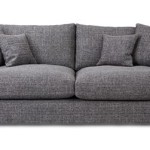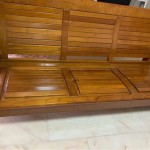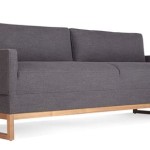What is the Difference Between a Davenport and a Sofa?
The terms "davenport" and "sofa" are frequently used interchangeably, leading to considerable confusion regarding their distinct meanings. While both refer to upholstered seating designed for multiple individuals, their historical origins and specific design connotations differ. Exploring these differences requires examining the evolution of furniture design, the historical context surrounding each term, and the subtle yet defining features that distinguish a davenport from a standard sofa.
Understanding the nuances between a davenport and a sofa allows for a more informed appreciation of furniture history and a greater clarity when discussing interior design. This article will delve into the etymology of each term, analyze characteristic design features, and clarify the contexts in which each term is most accurately employed.
Historical Origins and Etymology
The term "sofa" has a relatively straightforward etymological history, tracing back to the Arabic word "suffah," referring to a raised platform or bench typically covered with cushions and blankets. This word made its way into the English language during the 17th century, describing a similar piece of furniture used for lounging and relaxation. Over time, the term "sofa" became widely accepted as a generic term for an upholstered seat with a back and arms, designed to accommodate multiple sitters.
The term "davenport," on the other hand, possesses a more specific and intriguing origin. It is directly linked to the A.H. Davenport Company, a prominent furniture manufacturer based in Boston during the late 19th and early 20th centuries. While the company produced a wide range of furniture, their name became particularly associated with a specific style of sofa, often characterized by its heavier construction, boxed shape, and typically upholstered in durable fabrics like leather or heavy wool. Because of the company’s influence and popularity, the term “davenport” became synonymous with this particular style, especially in certain regions of the United States.
The Davenport Company significantly impacted furniture design and manufacturing during its existence. They were known for their high-quality craftsmanship and their ability to adapt to evolving design trends. The "davenport" sofa, as popularized by them, wasn't necessarily an entirely new invention, but rather a refinement and popularization of existing styles, solidifying its place in furniture vernacular.
Design Characteristics and Distinguishing Features
While modern usage often blurs the lines, classic davenports and sofas typically exhibit different design characteristics. Sofas generally encompass a broader range of styles and construction methods. They can be characterized by curved lines, softer cushioning, and a variety of fabric options. Sofas may feature exposed legs, decorative pillows, and a more delicate overall aesthetic.
The classic davenport, however, is frequently described as being more substantial and boxy in shape. It often possesses a more rigid frame, heavier padding, and a simpler, less ornate design. The upholstery tends towards durable fabrics like leather, corduroy, or heavy wool, reflecting a focus on practicality and longevity. Traditional davenports may feature rolled arms, a high back, and minimal ornamentation.
Another defining feature associated with davenports is their potential for convertible functionality. Many davenports were designed to be easily converted into beds, often by simply unfolding the seat cushions or pulling out a hidden frame. While not all davenports could be converted, this sofa-bed functionality became a relatively common association with the term, particularly in the early 20th century.
It's crucial to acknowledge that these distinctions are not absolute rules. Design styles evolve, and furniture manufacturers frequently blend features across categories. Contemporary furniture labeled as "davenport" may deviate significantly from the traditional characteristics described above. The key is understanding the historical context and the general design principles typically associated with each term.
In summary, while sofas represent a broader category of upholstered seating, the term "davenport" historically refers to a specific style characterized by its robust construction, boxy shape, durable upholstery, and potential convertibility. The distinction lies primarily in the historical association with the A.H. Davenport Company and the specific design elements they popularized.
The materials used in the construction can also be a differentiator. While both sofas and davenports can be made with wood frames, the davenport often had a more robust, reinforced frame designed to withstand the wear and tear of frequent use, as well as the potential strain of being converted into a bed. Similarly, the cushions of a davenport often felt firmer and more supportive compared to the plusher cushions found on certain sofa styles.
Regional Variations and Contemporary Usage
The usage of the terms "davenport" and "sofa" varies regionally. In some areas, particularly in the Midwestern and Northeastern United States, "davenport" continues to be used as a generic term for a sofa, or perhaps more precisely, a convertible sofa-bed. In other regions, the term may be considered archaic or less frequently used.
In contemporary furniture marketing, the distinctions between davenports and sofas have become even more blurred. Manufacturers may use the terms interchangeably, or they may apply the term "davenport" to a sofa that possesses some, but not all, of the traditional design features associated with the term. This can contribute to the ongoing confusion surrounding the differences between the two.
Ultimately, understanding the historical context and design characteristics is crucial for deciphering the intended meaning of these terms. When purchasing furniture, it is always advisable to clarify the specific design features and functionality that are important to the consumer, rather than relying solely on the label applied by the manufacturer.
The influence of design movements and trends further complicates the distinctions. The mid-century modern aesthetic, for instance, brought about a shift toward cleaner lines and simpler forms in furniture design, impacting both sofas and davenports. Many pieces from this era incorporate elements of both styles, making it difficult to categorize them definitively. The rise of sectional sofas also added another layer of complexity, offering modular configurations that were not traditionally associated with either davenports or classic sofas.
The longevity and durability of furniture also play a role in how these terms are used and perceived. Many older, well-maintained sofas and davenports become family heirlooms, passed down through generations. These pieces often retain their original design characteristics and serve as tangible reminders of the historical context surrounding their creation.
The evolution of upholstery techniques and materials also influences the design and construction of sofas and davenports. Modern upholstery methods allow for greater flexibility in shaping and contouring the cushions and frames, leading to a wider range of design possibilities. Similarly, the development of new synthetic fabrics and fillings has expanded the available options for both sofas and davenports, offering increased durability, stain resistance, and comfort.
The internet and online furniture retailers have also contributed to the globalization of furniture styles and terminology. Consumers now have access to a vast array of furniture options from around the world, which can further blur the lines between traditional categories and design features. Online product descriptions may use the terms "davenport" and "sofa" interchangeably, or they may emphasize specific design elements that are considered desirable by contemporary consumers.
Therefore, a critical eye is needed when navigating the modern furniture landscape. Consumers should focus on understanding the specific features and functionality of a piece of furniture, rather than solely relying on the labels applied by manufacturers or retailers. By considering the historical context, design characteristics, and regional variations associated with the terms "davenport" and "sofa," individuals can make more informed decisions when selecting furniture for their homes.
Is It A Sofa Couch Or Davenport Which Do You Call Quora

Sofa Or Couch Quick And Dirty Tips

What Is The Difference Between A Couch Sofa And Davenport Quora
What Is The Difference Between A Couch Sofa And Davenport Quora
What Is The Difference Between A Couch Sofa And Davenport Quora

Davenport Sofa Wikipedia

Know The Difference Between Sofas Davenports And Couches Bellacor
:strip_icc()/arborcocharcoalgray-ed3642ec5fa242c4b3b59a0c7a647a49.jpeg?strip=all)
What Exactly Is A Davenport And It Diffe Than Sofa

Know The Difference Between Sofas Davenports And Couches Bellacor
What Is The Difference Between A Couch And Chesterfield Quora

